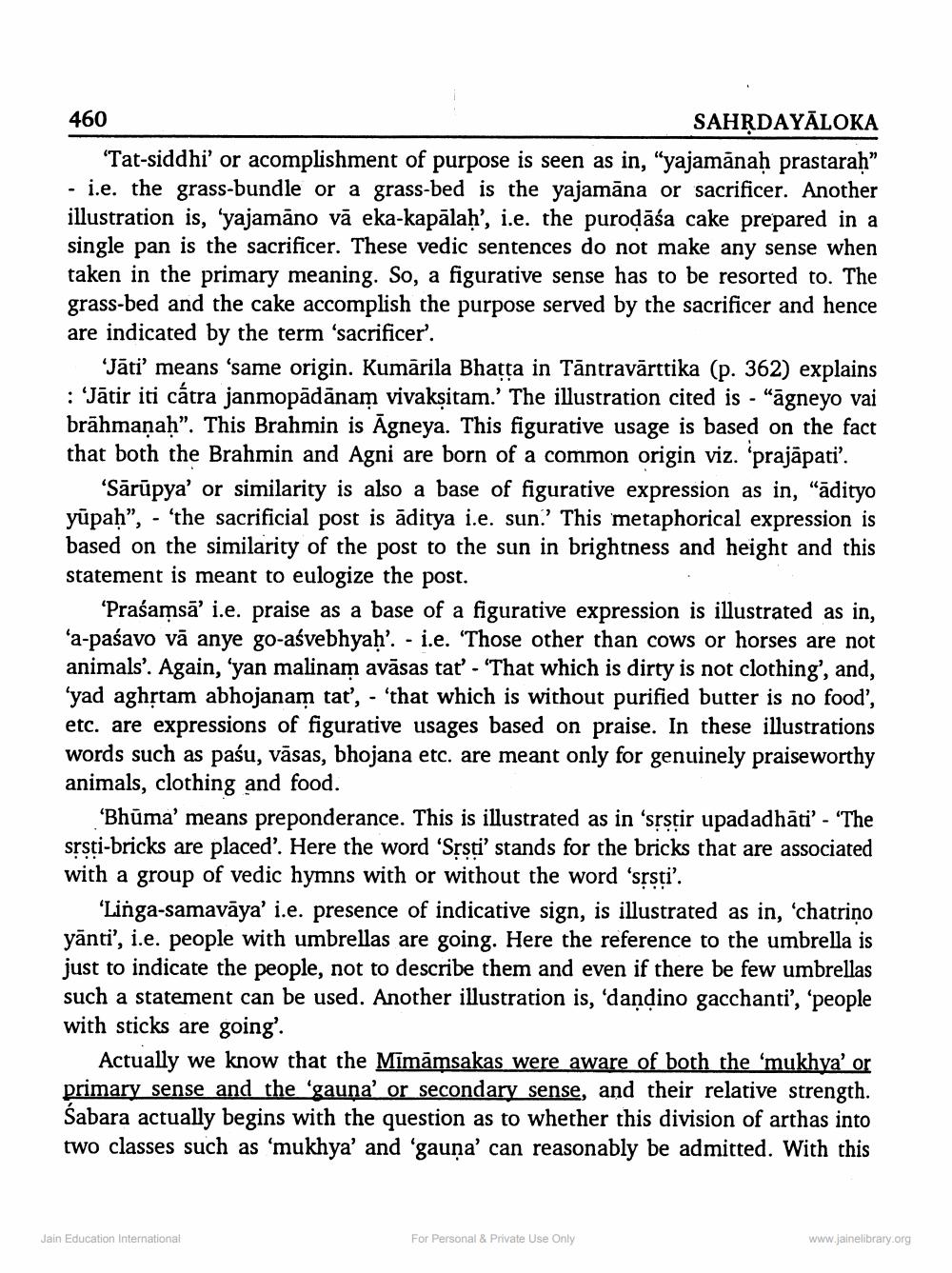________________
460
SAHRDAYĀLOKA 'Tat-siddhi' or acomplishment of purpose is seen as in, “yajamānaḥ prastarah” - i.e. the grass-bundle or a grass-bed is the yajamāna or sacrificer. Another illustration is, 'yajamāno vā eka-kapālah', i.e. the purodāśa cake prepared in a single pan is the sacrificer. These vedic sentences do not make any sense when taken in the primary meaning. So, a figurative sense has to be resorted to. The grass-bed and the cake accomplish the purpose served by the sacrificer and hence are indicated by the term 'sacrificer'.
“Jāti' means 'same origin. Kumārila Bhatta in Tāntravārttika (p. 362) explains : Jātir iti cátra janmopādānam vivakṣitam.' The illustration cited is - "āgneyo vai brāhmaṇaḥ”. This Brahmin is Āgneya. This figurative usage is based on the fact that both the Brahmin and Agni are born of a common origin viz. 'prajāpati'.
'Sārūpya' or similarity is also a base of figurative expression as in, "ādityo yüpah”, - 'the sacrificial post is āditya i.e. sun. This metaphorical expression is based on the similarity of the post to the sun in brightness and height and this statement is meant to eulogize the post.
'Praśamsā' i.e. praise as a base of a figurative expression is illustrated as in, 'a-paśavo vā anye go-aśvebhyah'. - i.e. 'Those other than cows or horses are not animals'. Again, 'yan malinam avāsas tat' - 'That which is dirty is not clothing', and, 'yad aghstam abhojanam tat', - 'that which is without purified butter is no food', etc. are expressions of figurative usages based on praise. In these illustrations words such as pašu, vāsas, bhojana etc. are meant only for genuinely praiseworthy animals, clothing and food.
‘Bhūma' means preponderance. This is illustrated as in 'srstir upadadhāti' - 'The srsti-bricks are placed'. Here the word 'Srsti' stands for the bricks that are associated with a group of vedic hymns with or without the word 'spsți'.
'Linga-samavāya' i.e. presence of indicative sign, is illustrated as in, 'chatrino yānti', i.e. people with umbrellas are going. Here the reference to the umbrella is just to indicate the people, not to describe them and even if there be few umbrellas such a statement can be used. Another illustration is, dandino gacchanti', 'people with sticks are going'.
Actually we know that the Mimāmsakas were aware of both the 'mukhya' or primary sense and the gauna' or secondary sense, and their relative strength. Śabara actually begins with the question as to whether this division of arthas into two classes such as ‘mukhya' and 'gauna' can reasonably be admitted. With this
Jain Education International
For Personal & Private Use Only
www.jainelibrary.org




